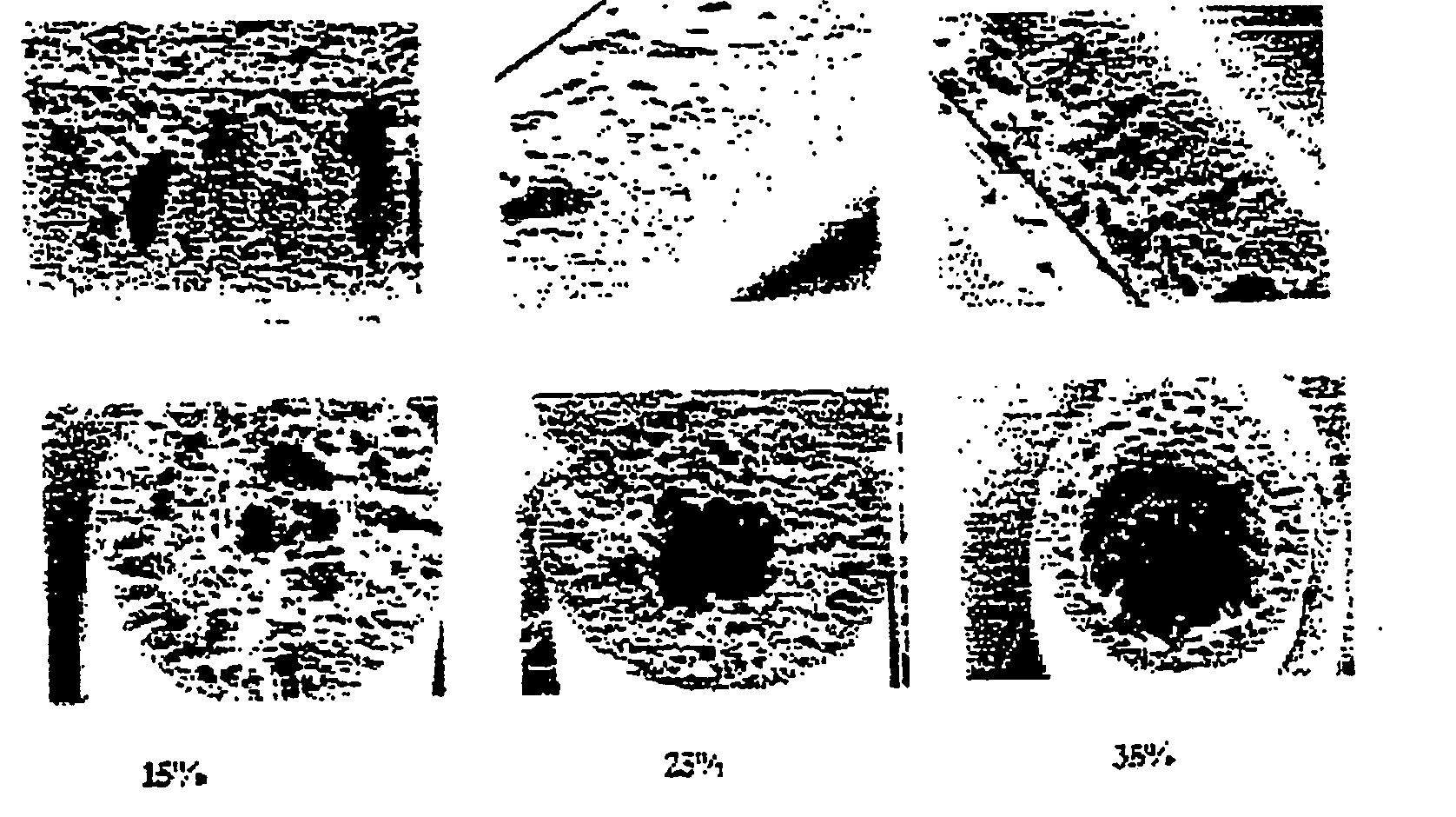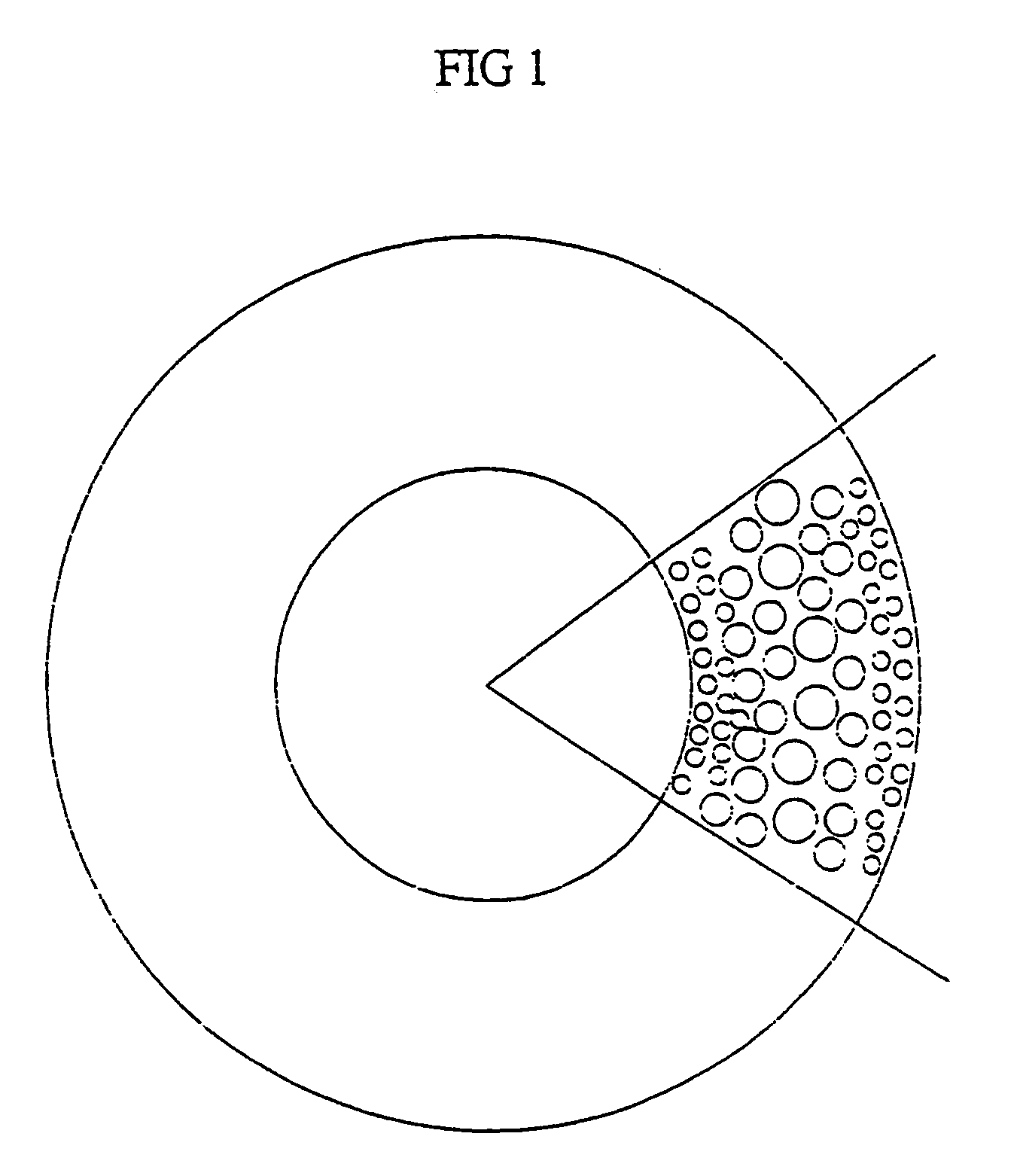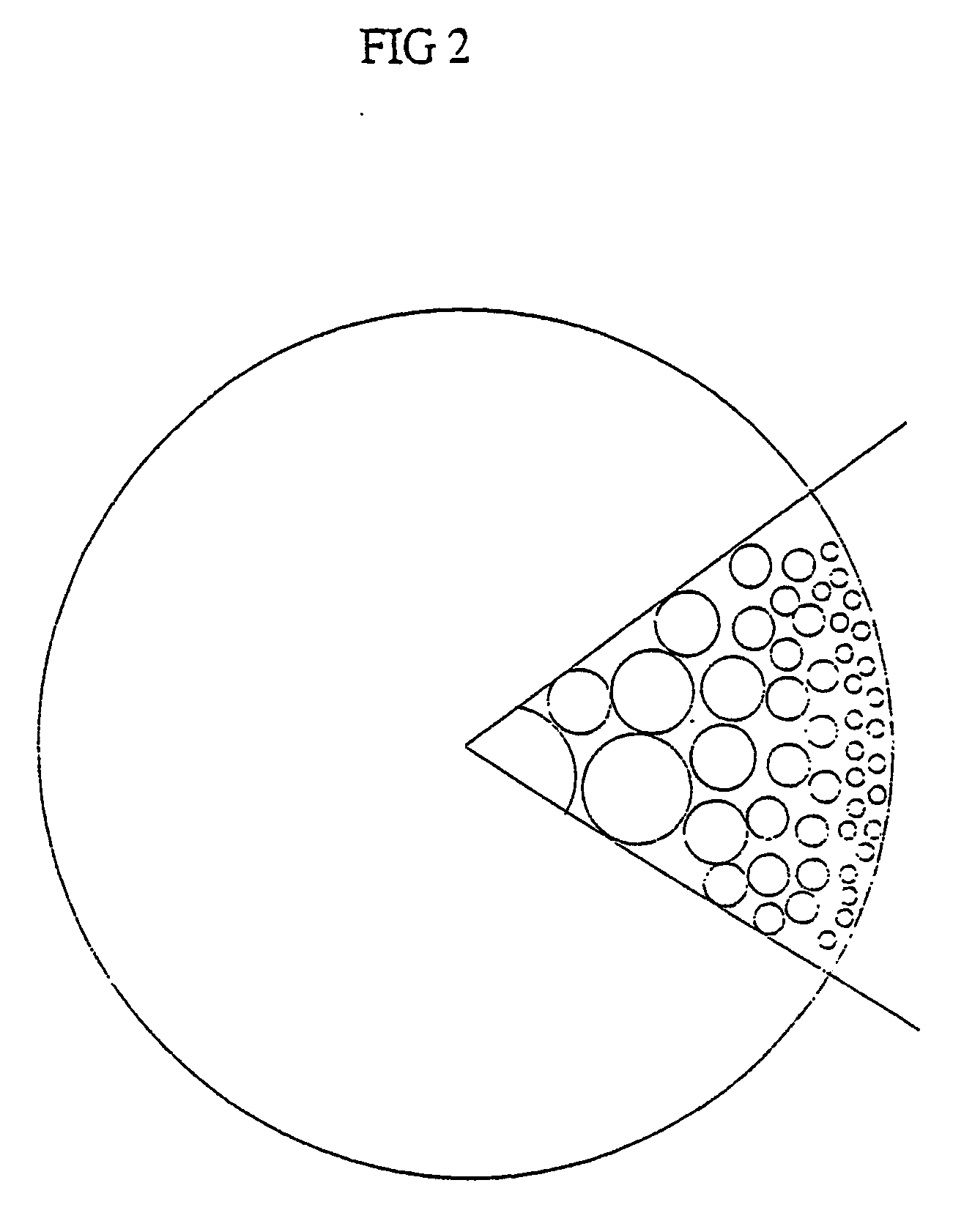Hollow fibres
a technology of hollow fibres and hollow fibers, applied in the field of hollow fibre membranes, can solve the problems of demixing, membrane damage, and thermodynamic instability of solvent dope mixtures
- Summary
- Abstract
- Description
- Claims
- Application Information
AI Technical Summary
Problems solved by technology
Method used
Image
Examples
Embodiment Construction
[0025] According to a first aspect the invention provides an elongate hollow fibre polymeric membrane having an outer surface, a plurality of pores and a pore size gradient increasing radially inwardly such that said pores form a substantially hollow passage in said fibre.
[0026] Preferably, said pores are convergent at a point radially inwardly of the outer surface.
[0027] Preferably the substantially hollow passageway is disposed around a longitudinal axis of said hollow fibre polymeric membrane.
[0028] Preferably the polymeric membrane material is any polymeric material which forms an asymmetric membrane.
[0029] According to a second aspect, the invention provides a method of forming a hollow fibre including the steps of: [0030] mixing a liquid lumen forming agent with a polymer dope; [0031] contacting said dope with a quench fluid for a time sufficient to solidify said dope; and wherein said quench fluid is contacted only at an outer surface of said dope corresponding with an ou...
PUM
| Property | Measurement | Unit |
|---|---|---|
| Solubility (ppm) | aaaaa | aaaaa |
| Solubility (ppm) | aaaaa | aaaaa |
| Solubility (ppm) | aaaaa | aaaaa |
Abstract
Description
Claims
Application Information
 Login to View More
Login to View More - R&D
- Intellectual Property
- Life Sciences
- Materials
- Tech Scout
- Unparalleled Data Quality
- Higher Quality Content
- 60% Fewer Hallucinations
Browse by: Latest US Patents, China's latest patents, Technical Efficacy Thesaurus, Application Domain, Technology Topic, Popular Technical Reports.
© 2025 PatSnap. All rights reserved.Legal|Privacy policy|Modern Slavery Act Transparency Statement|Sitemap|About US| Contact US: help@patsnap.com



